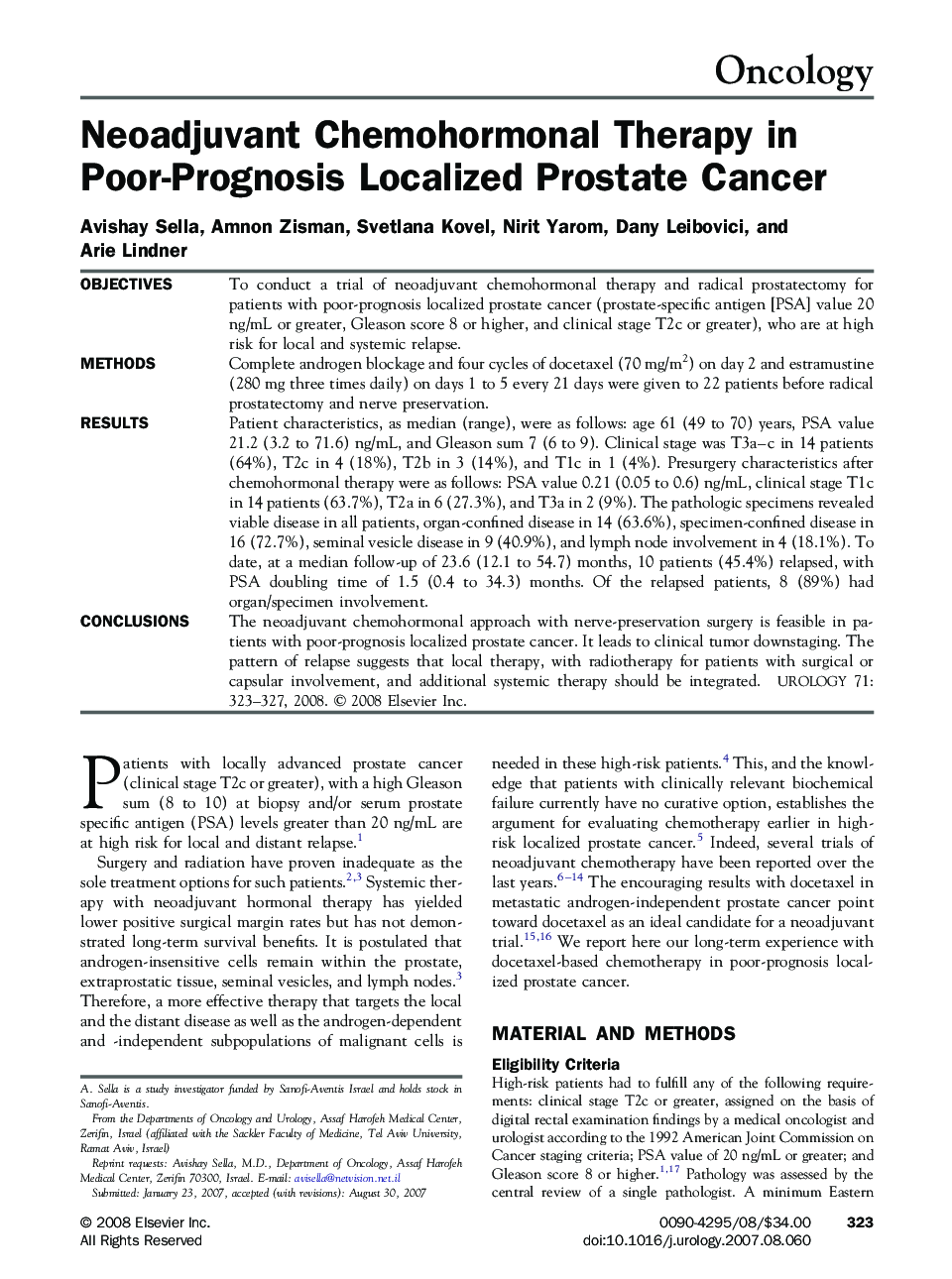| Article ID | Journal | Published Year | Pages | File Type |
|---|---|---|---|---|
| 3903495 | Urology | 2008 | 5 Pages |
ObjectivesTo conduct a trial of neoadjuvant chemohormonal therapy and radical prostatectomy for patients with poor-prognosis localized prostate cancer (prostate-specific antigen [PSA] value 20 ng/mL or greater, Gleason score 8 or higher, and clinical stage T2c or greater), who are at high risk for local and systemic relapse.MethodsComplete androgen blockage and four cycles of docetaxel (70 mg/m2) on day 2 and estramustine (280 mg three times daily) on days 1 to 5 every 21 days were given to 22 patients before radical prostatectomy and nerve preservation.ResultsPatient characteristics, as median (range), were as follows: age 61 (49 to 70) years, PSA value 21.2 (3.2 to 71.6) ng/mL, and Gleason sum 7 (6 to 9). Clinical stage was T3a–c in 14 patients (64%), T2c in 4 (18%), T2b in 3 (14%), and T1c in 1 (4%). Presurgery characteristics after chemohormonal therapy were as follows: PSA value 0.21 (0.05 to 0.6) ng/mL, clinical stage T1c in 14 patients (63.7%), T2a in 6 (27.3%), and T3a in 2 (9%). The pathologic specimens revealed viable disease in all patients, organ-confined disease in 14 (63.6%), specimen-confined disease in 16 (72.7%), seminal vesicle disease in 9 (40.9%), and lymph node involvement in 4 (18.1%). To date, at a median follow-up of 23.6 (12.1 to 54.7) months, 10 patients (45.4%) relapsed, with PSA doubling time of 1.5 (0.4 to 34.3) months. Of the relapsed patients, 8 (89%) had organ/specimen involvement.ConclusionsThe neoadjuvant chemohormonal approach with nerve-preservation surgery is feasible in patients with poor-prognosis localized prostate cancer. It leads to clinical tumor downstaging. The pattern of relapse suggests that local therapy, with radiotherapy for patients with surgical or capsular involvement, and additional systemic therapy should be integrated.
